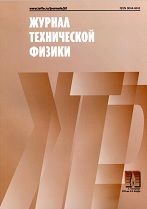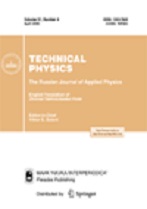|
This article is cited in 19 scientific papers (total in 19 papers)
Plasma
Effect of the discharge parameters on the generation of deuterium ions in the plasma of a high-current pulsed vacuum arc with a composite zirconium deuteride cathode
A. G. Nikolaeva, E. M. Oksab, V. P. Frolovaa, G. Yu. Yushkova, D. L. Shmelevc, I. V. Uimanovc, S. A. Barengol'tsde
a Institute of High Current Electronics, Siberian Branch of the Russian Academy of Sciences, Tomsk
b Tomsk State University of Control Systems and Radioelectronics
c Institute of Electrophysics, Ural Branch, Russian Academy of Sciences, Ekaterinburg
d Prokhorov General Physics Institute of the Russian Academy of Sciences, Moscow
e P. N. Lebedev Physical Institute of the Russian Academy of Sciences, Moscow
Abstract:
We have studied the mass and charge composition of an ion beam extracted from the plasma of a vacuum arc with a zirconium deuteride cathode for various durations of the arc current pulse (half width at half amplitude) of 2, 4, 7, and 17 $\mu$s. It has been established that the fraction of deuterium ions in the vacuum arc plasma increases with the current and the dependence achieve saturation for current of about 1 kA. For the fraction of deuterium atoms in the cathode at a level of 40%, the fraction of deuterium ions in the vacuum arc plasma can exceed 80%. The experimental results have been interpreted theoretically. It has been shown that the main sources of deuterium ions in a microsecond arc discharge are cathode spots. We have developed a model of deuterium desorption during the operation of cathode spots for quantitatively estimating the concentration of deuterium ions in the arc plasma.
Received: 31.05.2016
Revised: 25.10.2016
Citation:
A. G. Nikolaev, E. M. Oks, V. P. Frolova, G. Yu. Yushkov, D. L. Shmelev, I. V. Uimanov, S. A. Barengol'ts, “Effect of the discharge parameters on the generation of deuterium ions in the plasma of a high-current pulsed vacuum arc with a composite zirconium deuteride cathode”, Zhurnal Tekhnicheskoi Fiziki, 87:5 (2017), 681–687; Tech. Phys., 62:5 (2017), 701–707
Linking options:
https://www.mathnet.ru/eng/jtf6228 https://www.mathnet.ru/eng/jtf/v87/i5/p681
|


|



 Contact us:
Contact us: Terms of Use
Terms of Use
 Registration to the website
Registration to the website Logotypes
Logotypes